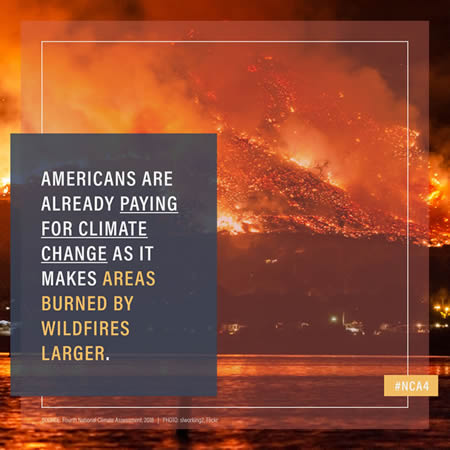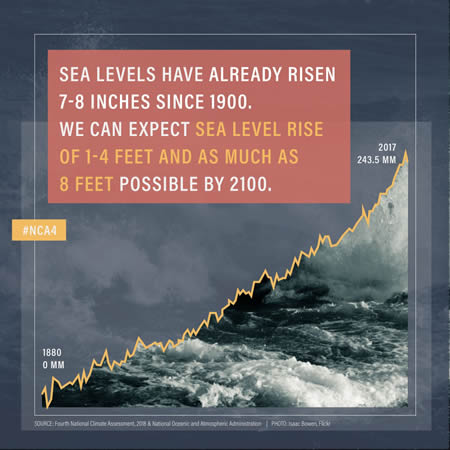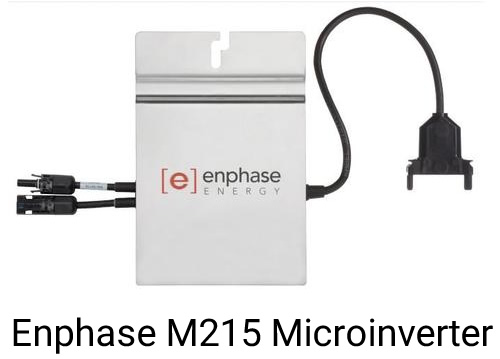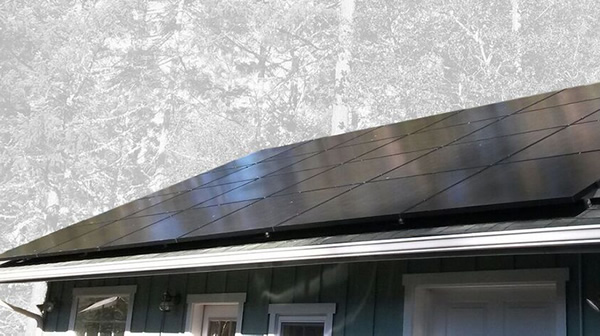Welcome to the
Run on Sun Monthly Newsletter

In this Issue: |
November, 2018
Volume: 9 Issue: 11
Climate Assessment Report: Dire Threat Largely IgnoredOn Black Friday, the Trump Administration released the 4th National Climate Assessment report, presumably in the hope that most Americans would still be too stupefied from their food coma and shopping binges to notice. So here we are a week later, and hopefully woke. Because the message of the report is a dire warning of what is already happening and what is to come. We ignore it at our peril. From ClimateNexus: This U.S. federal government report shows that:
Topline findings of the report include:Human activity, primarily burning fossil fuels, is causing climate change. There is no credible alternative to global warming emissions to explain the warming.
Economic losses from climate change are significant for some sectors of the U.S. economy.
Americans are already responding to the climate change impacts of burning fossil fuels.
Storm surge and tidal flooding frequency, depth and extent are worsened by sea level rise, presenting a significant risk to America’s trillion-dollar coastal property market. Every American’s health is at risk from climate change, with the elderly, young, working class and communities of color being particularly vulnerable.
Transitioning from fossil fuels to renewable energy sources will reduce the risks of climate impacts.
|
“Climate change is a clear and present danger to the health and wealth of the American people…”
Get your copy of
Commercial Solar:
Step-by-Step
from
Run on Sun
Founder & CEO
Jim Jenal

Now available on Amazon.com
in both
Print & Kindle versions.
Commercial Solar:
Step-by-Step
from Run on Sun
Founder & CEO
Jim Jenal

Now available on Amazon.com
in both Print & Kindle versions.
Help Us Spread the News!


NY Times asks: How much Hotter is Your Hometown than when You were Born?Nothing warms the cockles of a data-geek's heart more than seeing really cool data visualizations, and if that visualization helps illustrate a vital subject in an easy-to-grasp manner, well that is a data geek jackpot. Probably no one does data visualizations better than the folks at the New York Times, and their latest is amazing - driving home the impact of climate change in a way that is both personal and dramatic. Titled, "How much Hotter is Your Hometown than when You were Born?" it allows the user to enter their hometown (Los Angeles, in my case) and year of birth. According to their dataset, there were roughly 55 days when I was born where you could expect temperatures to reach 90 degrees (F). Scroll down the page, and a graph is charted, showing the increase in days reaching 90 over the years, hitting 67 days in 2017, as you can see here:
But if you continue to scroll down it gets even more alarming:
Wow - at present trends, by 2089 there could be anywhere from 84 to 104 days of 90 degrees or better, with 93 days being the most likely number. But these predictions assume that the world will adhere to the Paris Climate Agreement, and given recent developments in both the U.S. and Brazil, that is increasingly unlikely. Of course it isn't just the heat, it's the humidity, and the visualization notes that areas with higher humidity than LA will feel the heat even more. On the other hand, areas that experience dry heat, are likely to experience greater drought, and as we have so painfully seen these past few weeks, even more intense and deadly wildfires. In other parts of the world the forecast is even more daunting. Take a city like Jakarta - it already averages more than five months of temperatures above 90!
According to those projections, by the end of the century, temperatures above 90 degrees in Jakarta, "may last for most of the year." There is a lot more useful information there and I encourage you to check it out. Would that all information about Climate Change were presented in an equally compelling manner - bravo, NYT! |
Enphase announces Upgrade Program for Early Adopters…One of the nagging concerns in the solar industry is what to do about those aging legacy systems? As systems age there can be reliability issues and finding compatible parts can be a real issue in a fast moving technology environment like solar power. Given all of that, we are pleased to announce the Enphase Update Program for Enphase Early Adopters. There is a lot to this program, including three distinct upgrade paths, so let's break it down step-by-step... Who is Eligible?This program is dedicated to the earliest adopters of Enphase microinverters, specifically the M175, D380, M190, and M210 models. (Of the eligible microinverter models, Run on Sun only ever installed the M210.) System owners that have M215's, M250's, or S280 microinverters are not eligible for this program.
What are My Options?There are three upgrade paths with varying benefits, costs, and timing, however, all three offer full 25-year product warranties and a two year service agreement. The three options are: Microinverter Upgrade, Full-System Upgrade, and Next-Generation Upgrade - let's take them one at a time. Microinverter UpgradeThe most cost-effective option is the Microinverter Upgrade because it takes advantage of your existing solar panels that are likely still in good shape. This upgrade provides all of the following:
Legacy owners can purchase this equipment directly from Enphase for just $67.50/panel - a really great price. Removal and re-installation labor will vary widely based on various factors including the difficulty of the roof, the quality of the original installation, and whatever upgrades need to be done, probably on the order of $150/panel. *Note that not all systems will be able to do consumption monitoring depending on the existing service panel configuration. Full-System UpgradeWhen microinverters like the M210 were being installed, available panel wattage was much lower than today, but with the advent of electric vehicles, homeowners are in need of more energy than ever. The Full-System Upgrade provides a way to gain from today's higher power modules, but in a cost-effective manner.
This upgrade path involves the Enphase Energized Solaria PowerXT-AC Module, which has an Enphase IQ7+ microinverter integrated onto the Solaria module. (You can see an image of the Solaria modules on the left.) The module has a power production of 295 Watts, substantially greater than what was available for legacy modules. The cost to the homeowner for this upgrade path is $469/panel, which includes the AC module, cabling, and the Envoy for monitoring. Labor costs for this upgrade path are likely to be substantially higher, in part due to the need for new racking (the module dimensions are somewhat unusual - 63.8" x 43.9" - which could necessitate a racking change), changes in the sizing of the branch circuits, and the need to pull permits for the new system. Those factors are mitigated somewhat by the upgrade cost most likely qualifying for the federal 30% tax credit since it is an all new system, as opposed to the Microinverter Upgrade, that won't. Next-Generation UpgradeFinally, the last upgrade option is to wait for the rollout of the Enphase IQ8 microinverter system. (You can read about what the IQ8 technology will provide here.) Unfortunately, there is no pricing information available yet for that upgrade path, and its availability is not until sometime in 2019 - probably the second quarter at the earliest. What Happens if I do Nothing?If your system is working fine, you don't really have a need to do anything. However, these earlier microinverters came with a 15-year warranty, which means that more than half of that warranty period has expired. Moreover, particularly compared to the M190's, the newest Enphase microinverters have significantly greater reliability (Enphase claims by an order of magnitude), so you would be upgrading to a more reliable product and extending your warranty protection by 25 years. We will post again when we have more information regarding the Next-Generation, IQ8 upgrade. In the meantime, if you have questions about upgrading, please give us a call. |








